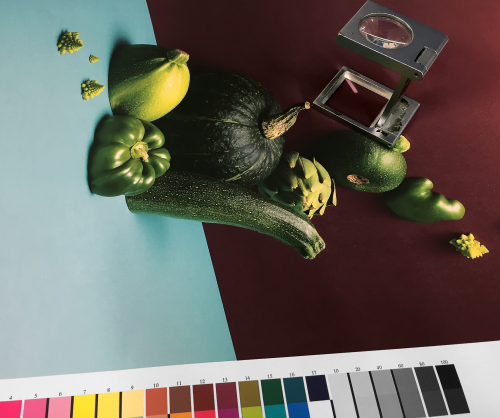Printing techniques
The printing of paper dates back to the mid-1400s, when Johann Gutenberg invented the first printing press in Mainz, Germany. In fact, “invented” is not the correct term, as the Chinese already had printing shops long before Gutenberg was even born. But he refined and simplified the printing process, making books and publications more accessible to people in general.
Print + digital = an introduction to printing techniques
Today we cannot imagine a world without printed publications. They are everywhere, and more sophisticated techniques are developing, despite the digitalization process of communication channels and society at large. We simply need both printed and digital publications in our lives.
Being strong advocates of print, we would like to share some of our knowledge. So, welcome to our introduction to printing techniques.
We will take you through some useful terms and facts on printing. You will get to know different printing techniques, learn more about opportunities and challenges when printing, and find guidelines to help you choose paper for your publication.
If you need more specific information or a helping hand in choosing, please contact your Holmen Paper representative.
Digital printing
Digital printing is not one single method, but rather a set of several different ones. In digital printing the artwork is transferred directly from the computer to the press, and there is no need for press plates, gravure rolls or clichés. This makes digital printing a basically unbeatable technique when it comes to saving time and material for smaller editions.
The downside is that the quality – in particular regarding lightfastness and colour control – does not quite equal that of offset printing. However, the development in digital printing has taken giant leaps over the past few decades. Faster and wider presses now allow high-quality, cost-efficient printing of up to a couple of thousand copies.
Digital printing uses ink or toners and is suitable for various items such as books, direct advertising, transactional, and packaging.

Offset printing
Offset printing is one of the most common printing techniques. An inked image is transferred from the printing plate to a rubber blanket on a roll, then further onto the printing surface.
The whole process is a complex interaction between the ink, fountain solution, blanket, paperboard characteristics, and drying mechanisms, together with the pressure, temperature, and press speed.
The main advantages of offset printing are consistent image quality, quick production of printing plates, and the opportunity of making continuous refinements ensuring a more precise result. This makes offset printing particularly suitable for large volumes of high-quality print applications such as newspapers, magazines, brochures, and books.
There are two main types of offset printing, web offset and sheet-fed offset. Web offset printing allows simultaneous printing of both sides of the paper, whereas sheet-fed offset presses print one side of the paper at a time. However, often these presses contain a perfector cylinder which enables printing on both sides in one pass.
Web offset printing allows simultaneous printing of both sides of the paper, whereas sheet-fed offset presses print one side of the paper at a time. However, often these presses contain a perfector cylinder which enables printing on both sides in one pass.
Cold-set web offset
Publications with shorter life span and lower quality requirements, such as newspapers, are usually printed using a cold-set web offset printing method. The ink is absorbed into the underlying paper, which means that a newly printed newspaper is not completely dry. This causes the ink to smudge and is the reason why you sometimes will find stains on your fingers after reading the morning paper.
Heat-set web offset
Heat-set web offset printing is suitable for publications with higher demands on quality, such as magazines, catalogues, and direct marketing. The paper is transferred through an oven which dries the ink and makes sure that no smudge occurs.
Sheet-fed offset
Offset printing in sheets, with no need for oven drying.

